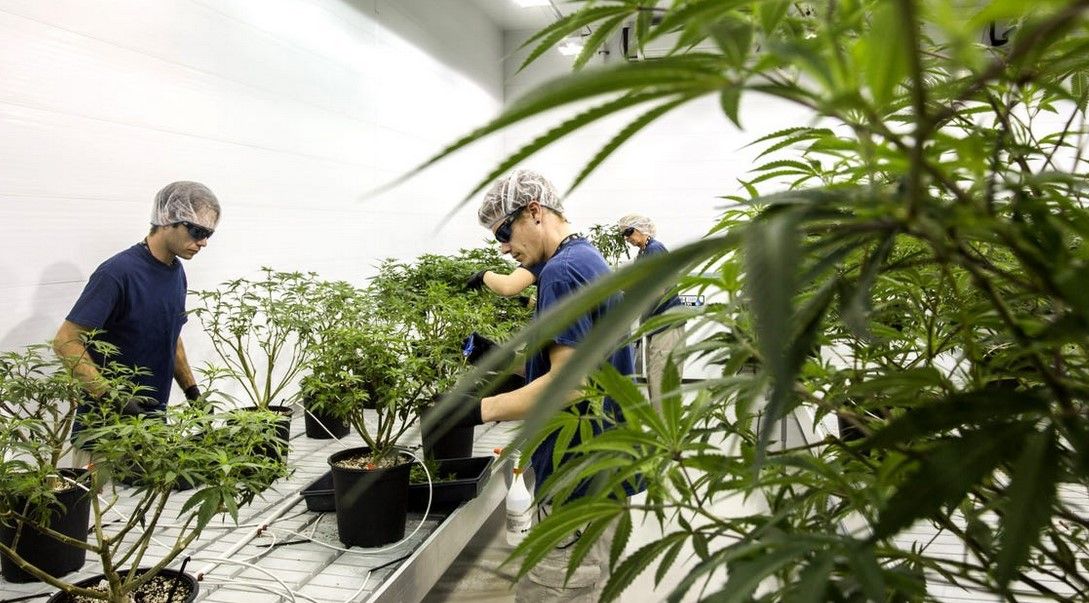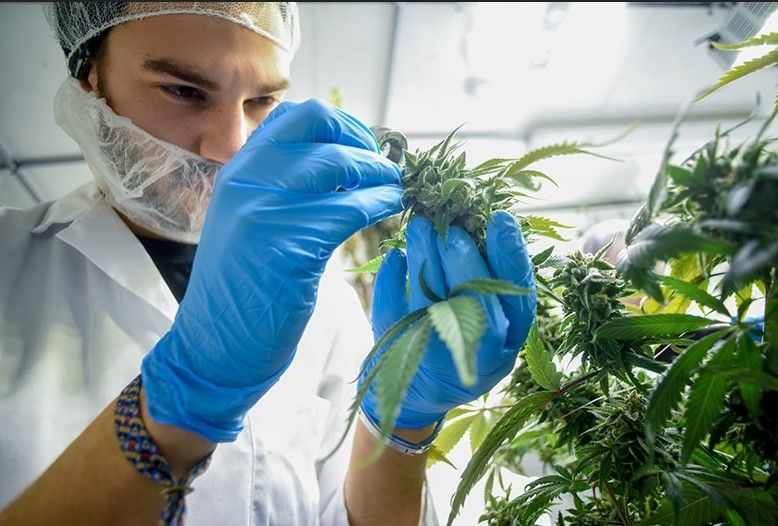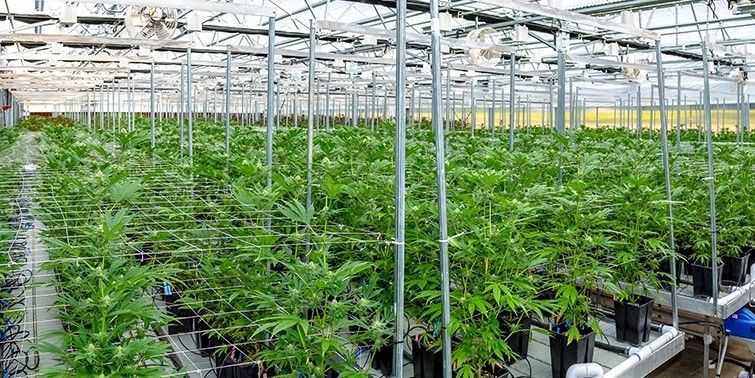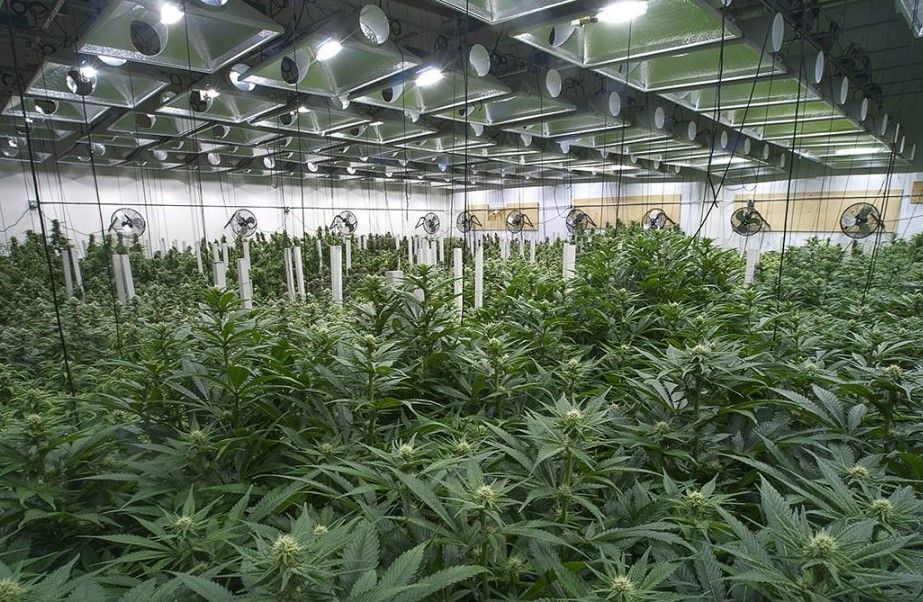Growing weed is super easy—it’s called “weed” for a reason—so don’t worry if you haven’t grown anything before. Our clear, easy-to-digest guide will help growers of all kinds, especially first-time ones.
Whether indoors or outdoors, growing marijuana is fun and rewarding, but it can also be challenging and takes a certain amount of patience, time, and money. We’ll walk you through all the steps of growing, from preparation, to seed germination, plant growth, and harvesting, as well as best practices and how to troubleshoot common problems.
Because the plant was illegal for so long, a lot of grow info has been passed down by word of mouth. There are many myths and traditions about growing weed, so it can be hard to sort good, sound advice from hearsay. Also, because it was illegal, there’s ample information on indoor growing and how to get the most out of a small space by maximizing harvests and training plants.
These are all great resources but not all growers want to put in that amount of time and effort to get a ton of weed—some growers just want to have fun, grow a little weed, and smoke something they grew themselves.
Below are all the topics covered in our growing guide. That is followed by a list of where it’s legal to homegrow in the US and a quick overview of the growing process.
Enjoy, have fun, and learn a tip or two—growing weed is therapeutic and relaxing, and there’s nothing better than smoking weed you’ve grown yourself.

Where is it legal to homegrow cannabis?
Before you get started growing, you’ll need to see if you even can grow in your state. Below is a list of states in which it is legal to grow your own marijuana at home, both states with medical and adult-use legal status. If your state does not appear on this list, it is not legal to homegrow in your state.
You might be surprised which states don’t allow homegrowing—only five medical states and one medical territory allow homegrowing at all, and some adult-use states require a medical card.
Check out our Guide to marijuana legalization for more details on homegrowing in your state.
Note that “mature” plants are those in the flowering stage, when plants begin to produce buds; “immature” plants are those in the vegetative stage, before they produce buds. A “household” is defined as two or more people living at a single residence.
Quick overview of the basics of growing marijuana
The best way to get quality buds and big yields is to grow strong, healthy plants. Here’s a quick rundown of the most important things you need to know about growing weed:
- Cannabis is a warm-season annual—it thrives in temperate climates, such as Northern California’s famed Emerald Triangle, and it grows and dies each year, having to get planted again the following year.
- It will take about 10-32 weeks to grow a weed plant, depending on the method you choose and how big you want plants to get.
- Before you start growing, you’ll have to determine whether you want to grow indoors or outdoors (more below). You can grow weed pretty much anywhere—it just depends what space, equipment, and resources you have available.
- Marijuana plants start out as either a seed or a clone. Seeds will need to germinate to grow into a seedling. A clone is a cutting taken off a weed plant that you can then grow into another plant, and it will have the same genetic makeup.
- After the seedling stage, a weed plant enters the vegetative stage, which is generally the longest stage of its life. Here the plant will be a main stalk, branches, and fan leaves—no buds yet.
- The magic happens during the flowering stage, when weed plants start to grow buds. Plants enter this stage about two months before harvesting.
- At harvest, you’ll cut down your plants, trim, dry, and cure them, and then your homegrown buds will finally be ready to smoke.

What does a marijuana plant need to survive and thrive?
- Light: Weed is a photoperiod plant, meaning the daily amount of light it receives will determine when it flowers—when it starts to produce buds. Outdoors, this happens when the daily amount of light reduces as summer turns to fall, and indoors, growers can control this by changing artificial light from 18 to 12 hours a day.
- Water: Weed plants of course need water, and the amount of water they need will change as they grow, and also depends on your local climate and weather.
- Nutrients: Weed plants need nutrients so they can grow strong and be healthy.
- Temperature and humidity: You’ll need to provide an environment with optimal temperature and humidity that will allow weed to thrive. Generally, this is between 55-85°F, with a relative humidity between 50-70%.
- Wind/airflow: Weed plants also need wind or airflow, which you can simulate indoors with fans, and which will occur naturally outdoors.
Indoor vs. outdoor marijuana growing
Your homegrowing journey starts with the question: indoors or outdoors?
Growing outdoors is the cheapest and easiest way to grow, because you can utilize the power of the sun and other natural resources, but you need the proper space to do it, and the space needs to be able to get ample sunlight throughout the growing season. Often, you can let plants grow large and get big yields with more space outdoors.
Growing weed indoors is more expensive because you’ll need to spend money on equipment and utilities, but you can control every aspect of the grow environment and set up an indoor grow almost anywhere. Expect to grow some killer weed—indoor is known for its potency and quality.

How to choose a marijuana strain to grow
At the end of the day, you want to grow a souche you like. A single plant can yield between a half-pound and a full pound of dried buds, depending on how big your plants get, so you’ll have a lot of it come harvest time.
The last thing you want is to put a ton of time and effort into growing weed and end up with a strain that you don’t like. Everyone has different tastes and preferences, and strains affect people differently.
Other factors to consider when picking a strain to grow
- Availability: The legality of cannabis in your state will determine whether you can buy seeds or clones at a dispensary. Even if you can, you’ll be limited to genetics that are only produced in your state, as seeds and clones can’t cross state lines.
- Climate and environment: Certain strains benefit from open space and are easier to grow outdoors, and some grow short and stout, making them great for indoor growing. Additionally, some strains need more attention and are more susceptible to pests and may benefit from a climate-controlled environment. It’s a good idea to talk to other growers in your community to see which strains grow best in your climate.
- Garden space: Cannabis can be grown successfully in small or large spaces, but it’s important to know how much space you have to work with before you start building out a garden. For example, if growing in a small space, consider growing indicas, which tend to grow shorter and bushier.
- Length of time to grow: Some strains take longer to mature than others. If you want a quick turnaround, aim for strains that take 8-9 weeks to flower instead of 12. Autoflower cultivars will be a lot shorter.
- Difficulty of growing: Difficulty equates to more care and attention, which can involve a more complex nutrient regiment, more training requirements, and perhaps paying more attention to environmental factors. These all take time, patience, and research to master, especially if you don’t have much growing experience.

